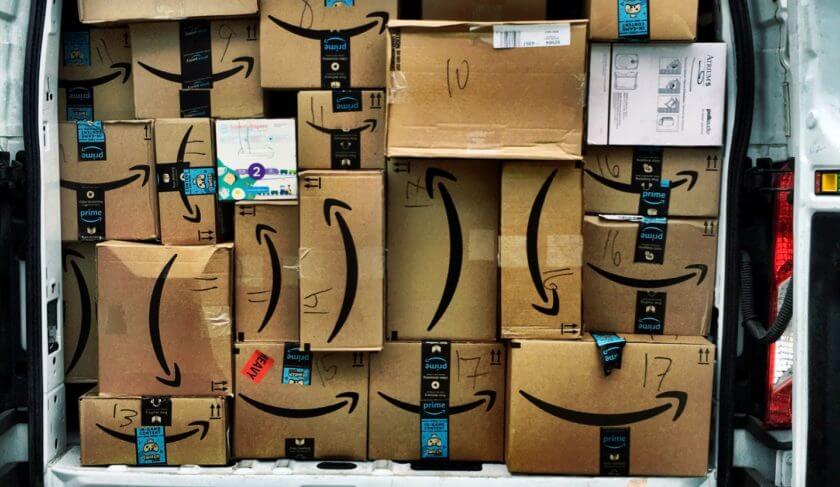
Not subscribed to HerMoney’s weekly newsletters yet? This is what you’re missing! Here’s a look at what we published in our “This Week In Your Wallet” newsletter, Tuesday, June 22, 2021. Subscribe Today!
This Week In Your Wallet: Prime Of Your Life Edition
Okay, who’s dipped a toe into the carnival that is the Prime Day shopfest? It’s not just happening on Amazon anymore. Walmart, Target and other online retailers are all along for the ride. I even got an email for 25% off most things at Bloomie’s to coincide with the frenzy that started yesterday and ends tonight.
For me, “dipped” is pretty much the appropriate word. Because I have a new pantry to organize, and because I streamed The Home Edit during COVID, I put a set of Rubbermaid organizers into my cart, but I haven’t checked out. Why? 1) Because I’m not sure they are going to be the sizes I eventually need. 2) MoneyRule #41, When It’s 50% Off, It’s Still 50% On. And 3) I have two other sources of information weighing on me.
The first was my interview with Alec MacGillis, author of Fulfillment: Winning and Losing In One-Click America, on our most recent HerMoney podcast. Even before COVID, more than 40% of e-commerce flowed through Amazon, but during the pandemic sales grew by more than 40% and continue to soar. It’s worth a listen for MacGillis’s take on how Amazon has impacted small businesses, the overall job market, the country’s landscape, and – yes – how we make decisions about what and where we buy.
The second, which I also highly recommend, is Wall Street Journal reporter Nicole Nguyen’s piece entitled How To Shop Online and Not Get Ripped Off. Among her pieces of top-notch advice: Know who you’re buying from. Much of what you buy – yes, on Amazon, but also on Walmart and Target – these days doesn’t come from the sites themselves, rather from a network of third-party sellers. (Locate the “sold by” section of the page, she suggests. “On Amazon, you’ll find it just below the Buy Now button. On Walmart, you’ll see ‘Sold & shipped by’ beneath the Add to Cart button…On Target, it’s right in the middle, below the price.”) Then go to the seller’s page and check them out directly. If it looks sketchy, doesn’t have a number to call for customer service, or doesn’t seem to exist at all, take a pass. She also suggests casting a wary eye on reviews. They may be fake, old or both. And always skip any purchase without a reasonable return policy. Solid suggestions all around.
The Urge To Splurge
FOMO is back, the June 7 cover of New York Magazine declared. The story, by Matthew Schneier, is a look at how fraught and confusing it can be to emerge from your pandemic bubble into real life. Life was easier when there were no invitations to decide among. It was also a lot cheaper. Suddenly we’re wearing – and buying – makeup again. As well as, as Schneier notes, other “in-public essentials for a public creeping out of its hermitage: teeth-whiteners, deodorant, sunblock, condoms.”
And yet, as Michelle Singletary suggests in The Washington Post, there are a number of really good reasons to resist the urge to splurge. First up – that rising inflation. There’s no getting around the fact that the things you need to (and want to) buy are more expensive now than they were a year ago. Cars. Groceries. Travel. (Lumber prices, thankfully, are coming down.) You’ve got to create space for that in your spending plan. Second – debt. Although, as she reports, 34% of people with credit card debt owe less than they did at this time last year, 26% owe more. That’s not insignificant. We’re not saying that you shouldn’t spend, but it’s time to do a debt checkup to make sure you’re keeping your numbers in line.
Diva, Much?
Across the country, companies are figuring out if, then how, they’re bringing their employees back to work and then broadcasting their message. Many are stepping carefully. Taking surveys. Trying their very best to read the tea leaves before they put their plan out into the field.
And yet…the headlines and studies emerging tell us that many just don’t want to go. If you’re among them, what do you do and how do you do it without appearing like a diva?
As HerMoney’s Javacia Harris Bowser writes: This is not about you, it’s about your employer. Like any negotiation, it is all about what’s in it for them, and that means getting a solid grip on what you’re continuing to bring to the table, no matter where you work. How has your productivity tracked during COVID? What are the ways in which having flexibility has made you a better worker? Communicate all of that to your boss. Also, try to factor in how you’ll feel if you’re working remotely while the rest of the team returns? Will you be just fine with that, or will it bring on FOMO of a different sort? Just a few things to consider…
In Other Quarters
We are still waiting (and waiting) for the arrival of Harriet Tubman on the $20 bill, but before that happens it looks like we’ll see some women including Sally Ride and Maya Angelou on quarters. But there is room for more. If you’d like to nominate a woman to appear on this round of coins, which are scheduled to be issued from 2022 to 2025, here’s the form.
Have a great week!
Jean







